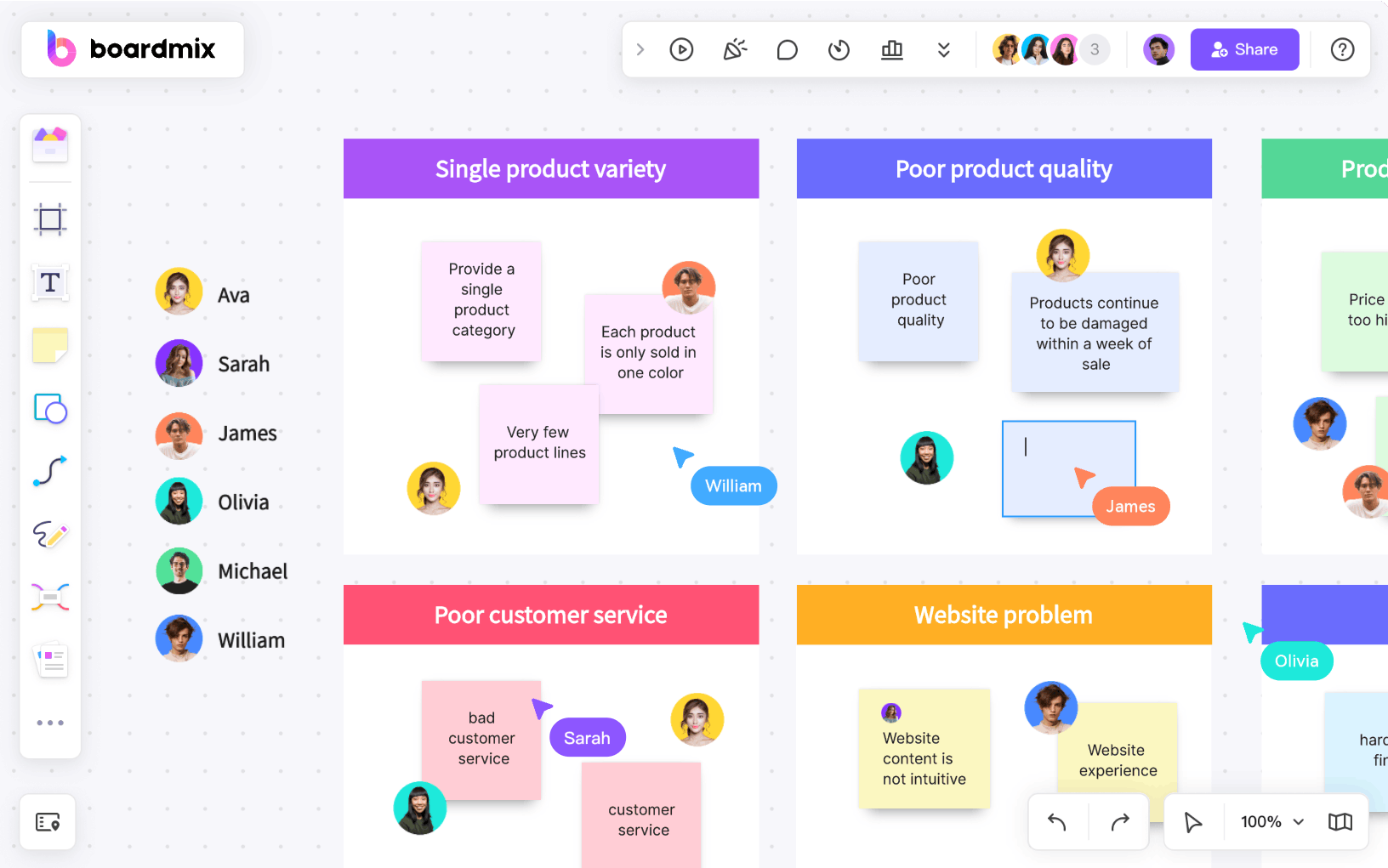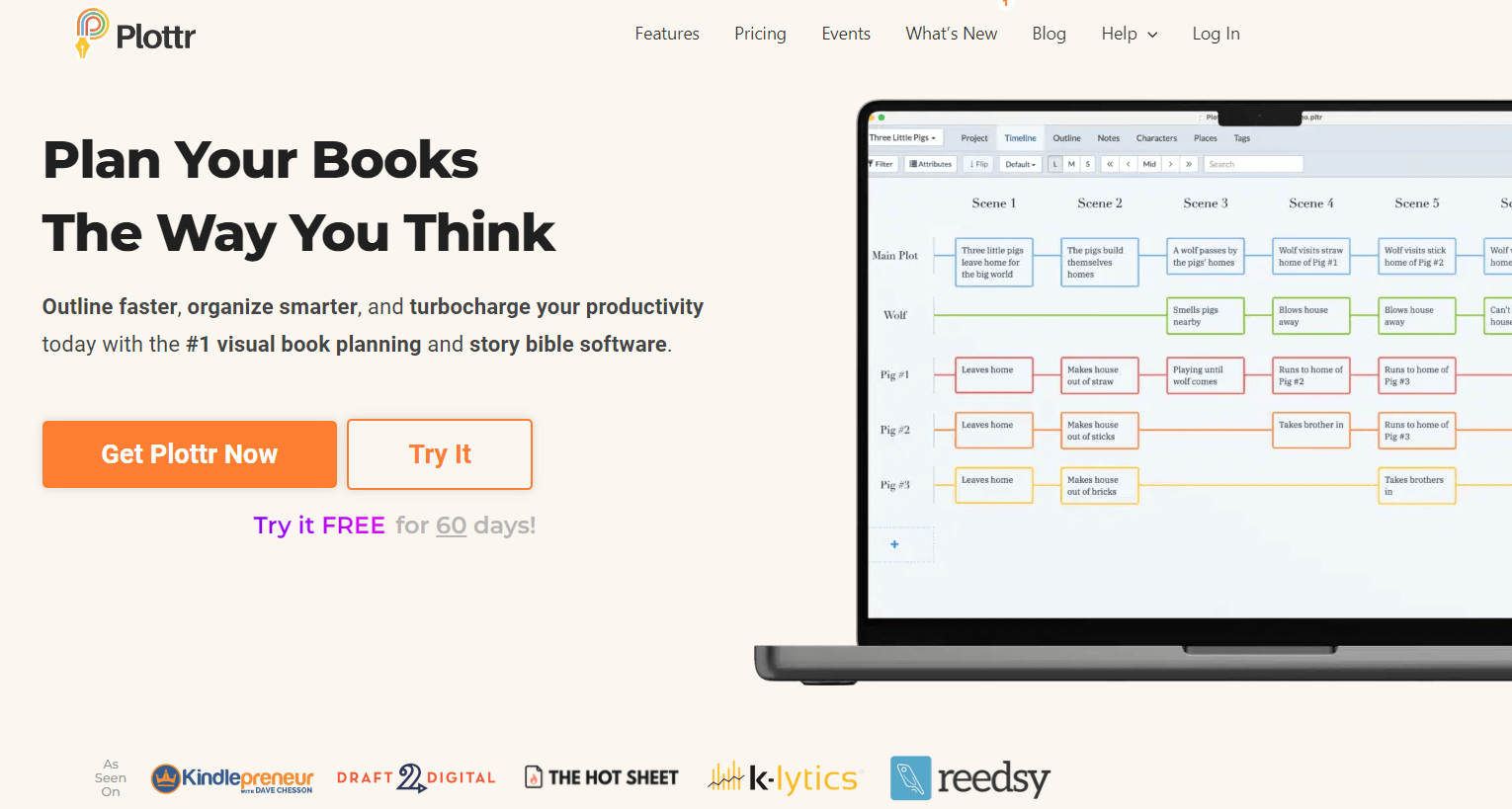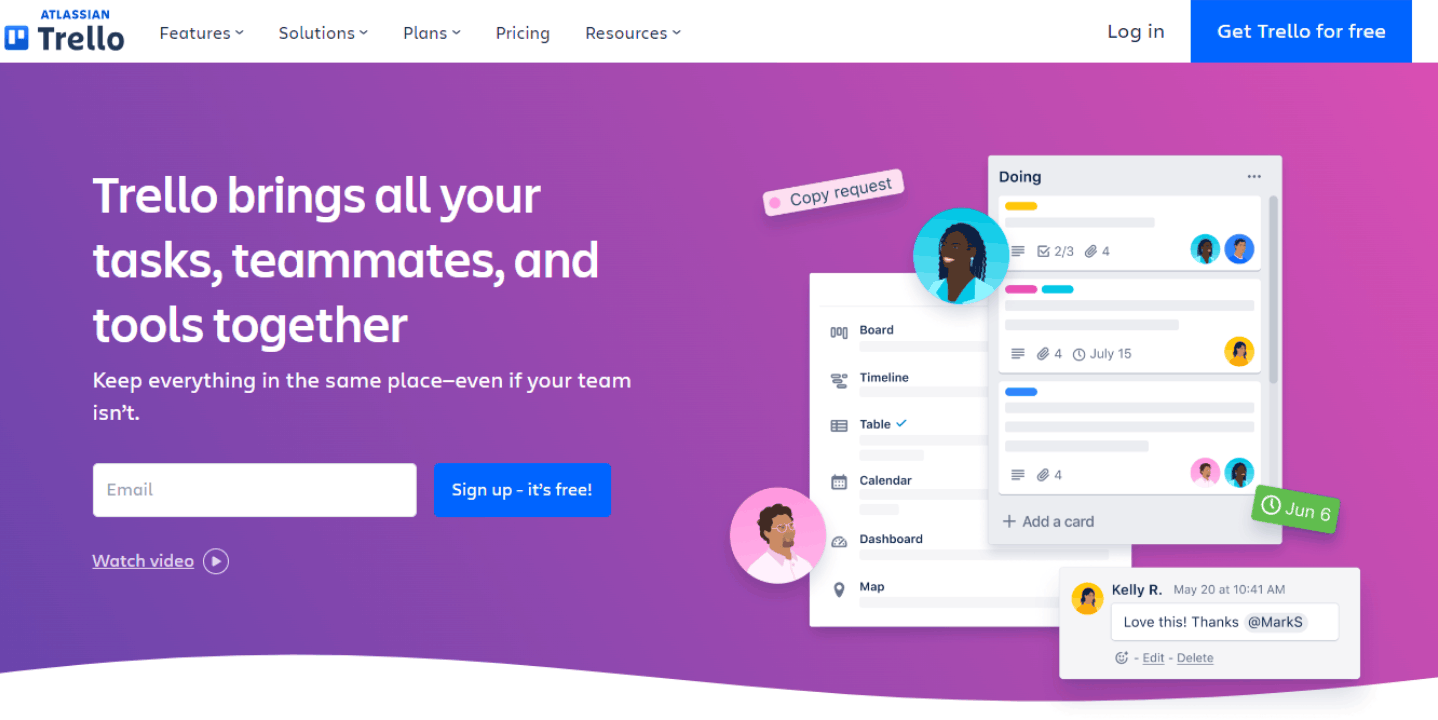Crafting a captivating narrative isn't simply about stringing together words in a pleasing manner. That's why we need a story outline. It's an art that requires thoughtfulness, creativity, and an understanding of storytelling techniques. In this article, we will dive into how to write an engaging story outline, learning from story outline examples using practical even free tools to stream the writing process.
Online Tools for Effective Story Outlining
It involves the delicate weaving together of multiple elements for creating a compelling narrative: a gripping plot, well-rounded characters, a captivating setting, and an impactful resolution. Each of these elements needs careful consideration and detailed planning. Fortunately, various online tools can assist writers in this process, making the task of outlining a story significantly less daunting. Here are some of the best online tools for effective story outlining.
1. Boardmix

Boardmix is an AI-powered tool that aids in planning and creating detailed story outlines. With its intuitive interface and features like custom boards for different story elements, easy sequencing, collaborative options, and AI-based suggestions, it offers a comprehensive solution for your outlining needs.
2. Scrivener

Scrivener is a highly popular tool among authors worldwide. It allows you to manage your writing project by organizing notes, drafts, and research all in one place. With its corkboard feature, you can create index cards for each scene and shuffle them around until you find the perfect sequence.
3. Google Docs

Never underestimate the power of Google Docs for story outlining. Its accessibility across different devices and collaboration feature makes it a go-to option for many writers. With the right use of headings and bullet points, Google Docs can become an efficient outlining tool.
4. Plottr

Plottr is a visual story outlining tool that lets you create storylines, plotlines, and timelines with a simple drag-and-drop interface. It also offers various templates based on popular plotting methods and provides an option to customize your own.
5. Trello

Trello is another robust platform that's perfect for outlining stories. You can create different boards for various story aspects and use its checklist feature to track character development or plot progression.
6. Evernote

Known for note-taking and task management, Evernote can also be used for story outlining. You can create different notebooks for each aspect of your story, clip useful articles, save images for inspiration, and access it all across devices.
7. Final Draft

Final Draft is preferred by scriptwriters for its pre-formatted templates, character navigation features, and beat board view that allows easy visualization of your story’s structure.
In conclusion, online tools for story outlining offer writers convenience, efficiency, and a more streamlined writing process. Whether you're an experienced author or a beginner, these tools can make the often overwhelming task of outlining manageable and enjoyable.
Story Outline Examples and Templates
An engaging narrative requires not just a great idea but also thorough planning. A well-crafted story outline can be the difference between a good story and an unforgettable one. This is true regardless of whether you're writing a short story, a fiction novel, or crafting a brand's narrative. Let's dive into the story outline examples and templates for these types of storytelling.
Short Story Outline

Short stories, by their very nature, need to be concise yet compelling. The focus is typically on a single incident, character, or aspect. Here is a template for outlining a short story:
1. Introduction: Introduce your main character and the setting. Briefly hint at the conflict.
2. Inciting Incident: Detail the event that initiates the main conflict.
3. Rising Action: Show how the conflict affects the protagonist, building suspense and interest.
4. Climax: Reach the peak of the conflict where the tension is highest.
5. Resolution: Conclude the conflict and show its impact on the protagonist.
Fiction Story Outline

Fictional narratives allow for extensive exploration of characters, plotlines, and themes. An outline for a fiction story can look like this:
1. Introduction: Set up your story world and introduce your characters and their normal routines.
2. Inciting Incident: Introduce the main conflict that disrupts the status quo.
3. Rising Action: Develop subplots, challenges, and obstacles for your characters to overcome.
4. Midpoint: A significant event that alters the course of your protagonist’s journey.
5. Climax: The moment of highest tension where the main conflict comes to a head.
6. Falling Action: Show the aftermath of the climax.
7. Resolution: Tie up loose ends and show how characters' lives are changed.
Brand Story Outline

Telling a brand's story effectively can help you connect with your audience on an emotional level. A brand story outline might look like this:
1. Background: Share the history of your brand, including why it was founded and its mission.
2. Challenges: Discuss the obstacles your brand faced on its journey.
3. Unique Selling Proposition (USP): Highlight what sets your brand apart from competitors.
4. Successes: Share milestones or success stories that your brand has achieved.
5. Vision for Future: Discuss where you see your brand going in the future and how it plans to serve its customers.
Each story type has unique aspects that need to be highlighted during the outlining process, but they all share a common goal - to captivate audiences from beginning to end. Utilize these templates to help structure your next narrative and ensure that it resonates with your readers or audience.
How to Write Story Outline: Step-by-Step Guide
A high-quality story outline is crucial in the storytelling or scriptwriting process. It helps to organize your ideas, develop your characters, and structure your story effectively. Boardmix, with its intuitive project management features, can simplify this process.
1. Create a New Project
Log into your Boardmix account and start by creating a new project for your story outline. You can name it after your story or screenplay to keep things organized.
2. Establish the Story Framework
Before you begin outlining, establish the key elements of your story:
Protagonist: Who is the main character?
Goal: What is the protagonist trying to achieve?
Conflict: What obstacles must the protagonist overcome?
Resolution: How does the story conclude?
3. Use or Create an Outline Template
Next, navigate to the templates section on Boardmix. If a story outline template is available, use it. If not, create a custom template to suit your needs. Typically, a story outline template may include sections for Act I, Act II, and Act III (for traditional three-act structures), or it could be more detailed with chapters or scenes.
4. Fill Out the Template
Begin filling out the template. Typically, this might include:
Act I: Set up the world of your story, introduce your protagonist and what they want.
Act II: Present the conflicts and challenges that obstruct the protagonist's path.
Act III: Detail the climax and how the story resolves itself.
Remember, each act or chapter should have its own arc—beginning, middle, and end.
5. Refine and Revise Your Outline
Review your outline regularly as you fill it in. Ensure that each part contributes to your story's overall plot and character development. Edit as needed rewriting is part of writing!
6. Collaborate and Get Feedback
One of the advantages of using Boardmix is its collaboration feature. Share your outline with other writers, colleagues, or friends. Their input can provide fresh perspectives or help identify any potential issues in your outline.
7. Finalize and Execute
Once you're satisfied with your outline, it's time to start writing! With your roadmap laid out in Boardmix, you can write with clarity and purpose.
Writing a high-quality story outline in Boardmix ensures a systematic and efficient process that helps bring coherence to your story structure, pace, and characters.
Tips for Writing Engaging and Compelling Narratives
Whether you're writing a novel, a short story, or a brand narrative, these tips will help you create engaging and compelling narratives:
1. Begin with an Intriguing Hook
Captivate your readers from the outset. Start with a strong, intriguing statement, question, or action that immediately draws them into your story. The hook should introduce the main conflict, the setting, or the protagonist in an exciting way.
2. Create Complex Characters
Your characters should be more than just mere names on a page. They should have depth, exhibiting strengths, weaknesses, ambitions, and fears. Making your characters multidimensional will make them feel real to your readers and will keep them engaged.
3. Use Active Voice
Using an active voice brings energy and immediacy to your writing, making your narrative more engaging. For instance, "John tossed the ball" is much more compelling than "The ball was tossed by John".
4. Show, Don’t Tell
Instead of simply telling readers what's happening, show it to them. Use sensory language to help readers visualize and experience your narrative. Rather than saying "Jane was sad", you might write "Jane's shoulders slumped as she trudged home, her teary eyes focused on the pavement".
5. Build Suspense
Keep your readers on the edge of their seats by building suspense throughout your story. This could be through plot twists, dramatic irony, or cliffhangers at the end of chapters.
6. Write Authentic Dialogue
Dialogue should serve to reveal character traits, provide important information, or advance the plot. Ensure it's authentic and reflects your characters' personalities and the situation they are in.
7. Craft a Satisfying Ending
The ending of your story should tie up all loose ends and answer any lingering questions the reader may have. It should provide closure and resolution to the conflicts introduced throughout the story.
8. Edit and Revise
Never underestimate the power of editing and revising. This is where you can refine your narrative, fix inconsistencies or errors, and enhance the overall quality of your writing.
Creating an engaging and compelling narrative requires patience and practice. But by incorporating these tips into your writing process, you'll be well on your way to crafting narratives that captivate and resonate with your readers.

To Recap
In conclusion, crafting captivating narratives begins with a structured story outline. Leveraging online tools like Boardmix streamlines the process, offering intuitive interfaces and collaborative options. Examples and templates provide valuable insights, guiding writers through each step. With Boardmix's AI-powered features, including custom boards and intelligent suggestions, writers can unleash their storytelling potential, creating compelling narratives that captivate readers.













